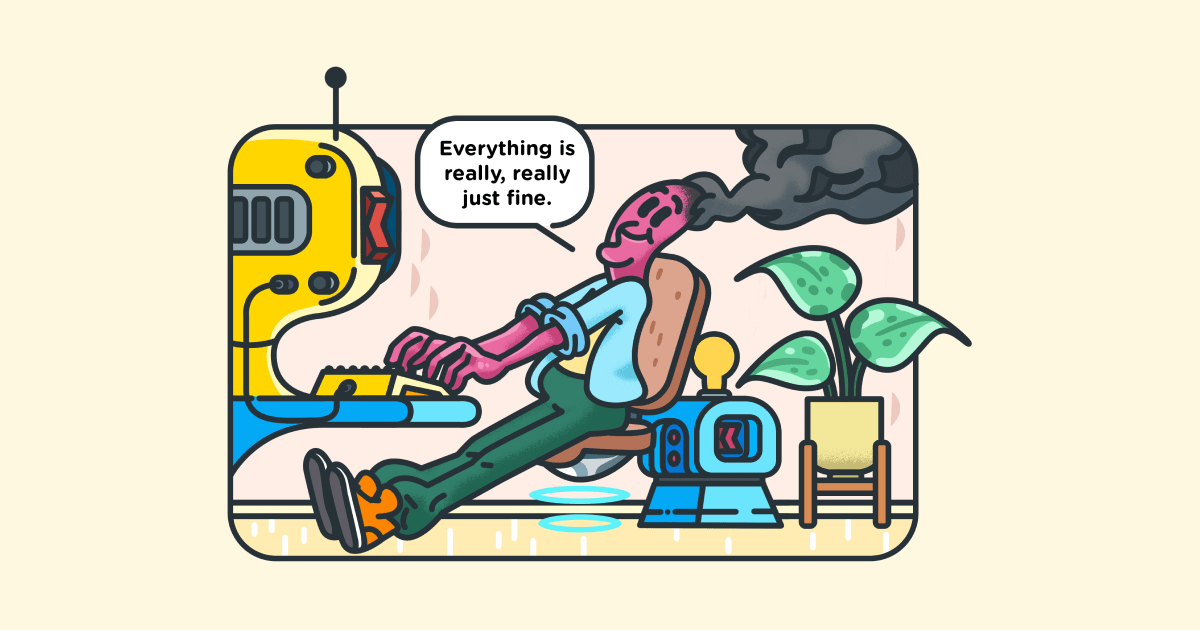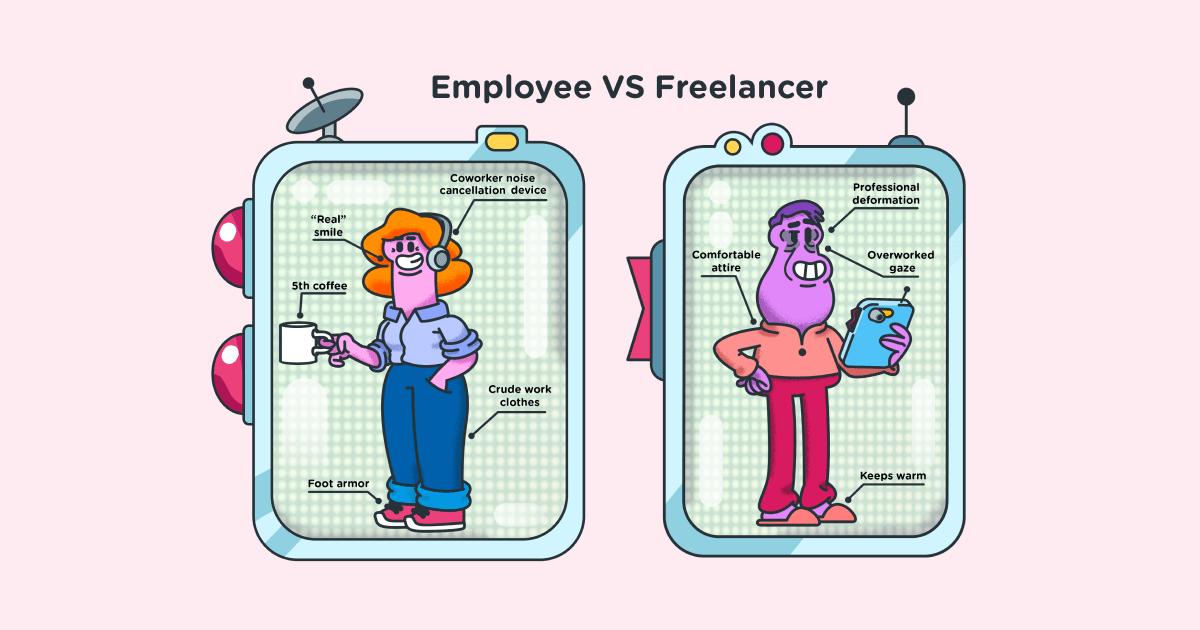How to create and promote teamwork in the workplace
Last updated on: March 11, 2022
Have employee conflicts become an everyday scene at your office? Or does everyone seem to keep their nose buried in their work without consulting their coworkers, even if it would help get the job done quicker?
Well, people are generally more prone to focus on their individual tasks, and less prone to include other people in their work processes. And, differences in opinions tend to breed conflict.
But, both phenomenons, when they go to the extreme, are a clear sign that you need to work on establishing successful teamwork in your office, and encourage your team members to act collectively, and think — like a true team.
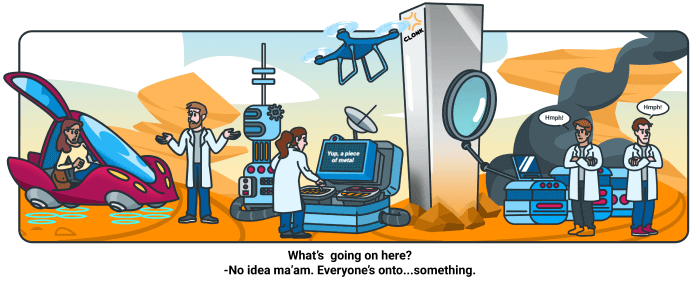
In this article, we’ll discuss why teamwork is important in helping you achieve a more homogenous work environment, why teamwork may seem difficult to achieve, and how exactly you can work on creating and promoting successful teamwork in your workplace.
To learn exactly how to take these steps, read on.
Table of Contents
What is teamwork?
According to the definition by the Cambridge Dictionary, teamwork is the process of working together with a group of people, preferably, towards a successful outcome.
By their definitions, both teams and workgroups have common goals, so it’s often easy to assume that these two concepts are merely synonyms.
But, while a “work group” implies that each individual is given a task they will work on independently to achieve a common goal or purpose, a “team” implies a more collaborative, cohesive, interdependent endeavor.
According to P. Harris & K. Harris, teamwork is built on individuals who employ their individual knowledge and skills to work together and form a joint effort to reach that common goal or purpose.
The simplest examples of teamwork can be found in sports. Every player has their own role and plays the best of their ability. But at the same time, they help boost each other’s morale and work to achieve the goal. Together, they have enough general knowledge of the sport (and each other’s roles) to be able to excel within its rules and limitations.
The odds of a single basketball player scoring a point going against an opposing team are close to none.
In much the same way, there are no actual “loner wolves” in regular workplaces. Everyone chips in a little to keep the company moving forward.
For example, when a startup company releases an update for their app, other members of the team test it out and contribute feedback – it’s not just the job of the QA department. Or, when a product manager needs to write a description that involves various technical terms, the programmers can help with their input instead of leaving the product manager to research and possibly miss some key features.
Why is teamwork in the workplace important?
Just like a sports team wanting to win a match, the employees want to see the business thrive. Similar to a trophy and a high ranking on a roster, it brings its own benefits: raises, better working conditions, days off, promotions, etc.
With successful teamwork, a company can rise above and beyond its mission and vision. And as cheesy as it can sound, successful workplace teamwork pushes forward the personal development of everyone involved.
How?
Well, this occurs because:
Teamwork builds and boosts office morale
Employees don’t need to go out for drinks or hang out personally to be effective teammates. In fact, the common thread that should connect them in the office is knowing each of them is an important part of the whole.
When everyone feels like their presence and work not only matters but also helps their colleagues, you have one happy employee.
The benefits of teamwork on boosting office morale are even proved by science — several studies indicate that we are psychologically wired to feel better when working in a team, than working alone. This may manifest in the form of:
- An extra energy boost when we need to power through a task
- Improved team motivation to share and work on failures
- A better feeling of overall recognition for the hard work we do
- The feeling of belonging that makes us more connected to the company and more likely to strive towards that common goal
Teamwork provides a support system
When teamwork culture is nurtured the right way, it creates a great support system. People help each other with minor work issues, meet deadlines sooner, and are more likely to reach out and be honest about any mistakes. This begins to transfer to their personal life as well.
In general, teamwork allows the members of the team to take more risks and think outside of the box — in case they fail in some way, they have the support structure of the team to fall back on.
Teamwork lowers stress levels
If you are a part of a functional, accountable team, teamwork has the potential to reduce your stress levels at work — research published at Oxford Research Encyclopedias shows that sharing responsibility for a workload makes you feel less pressured. On the other hand, an employee who is handling a heavy workload alone, is more likely to get overworked, which may lead to burnout. There is a psychological factor behind such findings. When you work alone, you’re more likely to feel overwhelmed, and the “blame” of potential failure is all on you. But, when the work is divided into several tasks and assigned to team members, the tasks are perceived as easier.
Teamwork facilitates a constant learning environment
Contrary to popular belief, some conflict and differences in opinion in the workplace are fertile ground for improvement. This kind of environment breeds good ideas and gets people to consider other perspectives and approaches to common problems.
In addition, teamwork implies a blend of different skills and knowledge — so, the less experienced professionals are likely to learn something new and useful from their more experienced coworkers, even if you don’t practice direct mentorship relationships within the team.
Teamwork builds “collective intelligence”
Mark Twain once said:
“There is no such thing as a new idea. It is impossible. We simply take a lot of old ideas and put them into a sort of mental kaleidoscope. We give them a turn and they make new and curious combinations.”
So, we may think that our ideas are unique, but we subconsciously draw most of them from our mental depositories of existing concepts:
- articles we’ve read and forgotten
- theories we’ve learned at college
- TED Talks we’ve seen years ago
When two people hold a brainstorming session, they double the size of their depositors and repurpose “new” ideas from a larger kaleidoscope of concepts. The more people are involved in the process, the more potential concepts you have to work with — this is called collective intelligence and it grows with constant collaboration.
Why does teamwork seem difficult to achieve?
Now, everything we’ve said so far makes it seem like teamwork is key to a tight-knit workforce. And on paper, the benefits are indisputable.
But in most cases, transforming a group of employees into a team can be extremely difficult for multiple reasons:
Vast differences in personality types impede teamwork overall
We are all so different in the way we do things, perceive them, which ideals we uphold, and it all transfers to our workplace. These things alone can create friction among employees, or in other cases – cliques.
With such a starting point, it can be very difficult to achieve unity.
How will you know who gets along and who has the potential to come to blows with one another?
After all, personalities clash and click in ways we can’t predict.
The lack of physical proximity impedes communication
Remote teams suffer greatly from this handicap. People have an innate desire to connect and belong to a group. And despite living in a digital age, we still prefer face-to-face communication. After all, body language accounts for an astounding 93% of our communication!
People connect better when they’re in each other’s presence. Two colleagues who sit across from each other are likely to communicate easier and avoid misunderstandings than those who can only see each other’s chat messages. We know from experience how much of the message gets lost in texts, chats, and emails.
💡 While it’s hard to achieve perfection while trying to connect remote workers, you can still have high functioning remote teams. If this topic is of special interest to you, we have further reading in our post that discusses remote team management.
People find it difficult to adapt to company changes
The internal structure of a company and all changes within it very much dictate how teams will operate.
Imagine having several teams and each of them works like a dream. They’re in sync, the projects are running smoothly, problems are being solved relatively quickly and without a hitch…
But then comes a change – some team members leave the company, or there is a need for a switch-up of team members due to a new project or deadline. And all of a sudden, there’s unrest between teams because people have grown accustomed to different modes of work. There is no universal set of rules and ideals to go by.
A lack of self-awareness makes people defensive
You have probably worked with people who seem very defensive when receiving criticism, are more likely to put blame on factors other than themselves, or think they can do no wrong.
These kinds of people are the first to cause friction within a team. Their fear of failure and public shame makes them shirk accountability for their actions. And before you jump to any conclusions – a Harvard Business Review study had famously proved that only 10-15% of employees within a company are actually self-aware.
A lot of team members will be aware of their strengths and abilities but ignore their weaknesses. For teams, this is bad because they won’t know where to jump in and compensate when problems arise. This is why self-awareness is one of the biggest hurdles to cross.
How to promote effective teamwork in your organization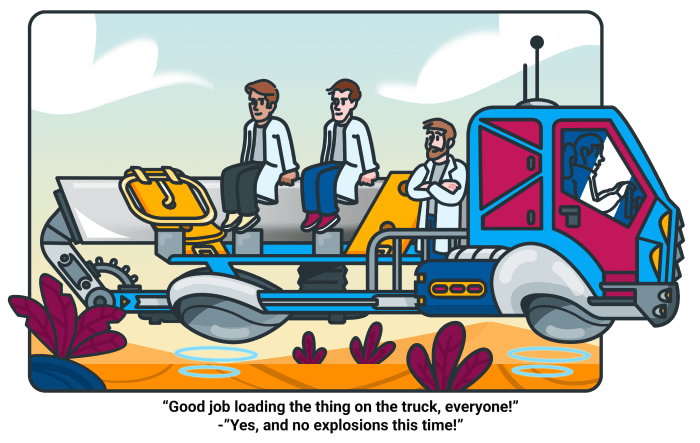
In order to improve teamwork, you can first take a page, two, or a dozen, from examples of companies who already thrive because of successful teamwork. Moreover, you can also follow and implement additional, tried-out advice and tips on how to tweak work within your team, in order to build a creative and harmonious work environment for your team.
Teamwork in the workplace examples — what you can learn from other companies
To help you better understand the concept of successful teamwork, here is how giants such as Google, Starbucks, Marvel Entertainment, Four Seasons, and Pixar approach collaboration within a team — and, more importantly, what you can learn from them.
Teamwork at Google, and what you can learn from it
Google hardly needs further introductions in terms of why they are considered a successful company, but many may not know that a large portion of their success comes from impeccable teamwork.
After all, Google has even made the effort to scrutinize what makes the perfect team, and, as it turns out, it’s not the perfect mix of the right individuals — it’s the feeling of psychological safety that may dictate how the said individuals interact with each other.
Psychological safety represents a shared belief that the team members are safe to take interpersonal risks, open up, and share with their teammates — and, according to Google, this factor is the most important one if you’re looking to build a successful team.
In order to establish psychological safety, team members need to respect each other’s opinions and emotions, have their own emotions and opinions respected by others, but also feel like they contribute to the joint endeavor equally. Such freedom helps people speak their minds, explore their creativity, and cultivate great ideas as a result.
Although various factors also build to its success, great teamwork has helped Google become the most valuable company in the world, with a worth of around $520bn.
The main point to learn from teamwork at Google:
When you establish psychological safety in your team and help everyone feel equally heard, valued, and appreciated, you help unleash creativity.
Teamwork at Starbucks, and what you can learn from it
Nowadays, you can find a Starbucks at every corner. And, it may come as a surprise, but this expansion started way back in the 1990s, when Howard Schultz, then the chairman and CEO of the company, started opening hundreds of stores across the US.
However, this chain of coffeehouses was nowhere near as successful back in the day, and the expansion was deemed too ambitious for its own good.
The problems lied in customer service, employee engagement, but also a lack of proper communication between various levels of the Starbucks company.
Everything changed in 1995 when Howard Behar took over as president of the company.
He focused on cultivating a work environment that would meet the needs of the employees, which proved crucial in helping the said employees serve their customers better.
Once everyone in Starbucks understood that they shouldn’t just be offering excellent coffee, but also excellent customer experience, the business quickly blossomed into a multinational endeavor and the largest coffeehouse chain in the world.
The main point to learn from teamwork at Starbucks:
When you cultivate the right work environment, you encourage the team to focus on providing a better customer experience, which is equally important for expansions and success, next to the impeccable quality of the products and services.
Teamwork at Marvel Entertainment, and what you can learn from it
Just like the Avengers themselves, the writers and comic artists who invented them also needed to assemble, in order to make a name for the Marvel comics.
Stan Lee would come up with an idea, and Jack Kirby (the comic book artists behind Captain America and the Hulk) or Steve Ditko (the comic book artist behind Spider-Man and Doctor Strange) would bring his ideas to comic-drawn life. The completed boards would then go to:
- letterers who’d add comic book text
- inkers who’d fill in material outlined by the comic book authors
- the colorists who’d add the primary colors
These boards would later be sent to the printer before being distributed to comic book stores and sold.
As evident, all the listed members of the team had separate obligations, but, they had to communicate and collaborate well with one another, in order to form a cohesive (and profitable) comic book.
As just a small example from the entire comic book process, the writers and comic book artists needed to work together closely, in order to flesh out the now-iconic characters, build their conflicts, and guide their stories.
As a result of a well-knit process (and a lot of great ideas), Marvel Entertainment grew over time, from a typical collection of children’s comics to a global phenomenon acquired by Disney in 2009, with over 20 blockbuster hits under its belt thus far.
The main point to learn from teamwork at Marvel Entertainment:
When you ensure everything is well-communicated, you ensure that you get the end result you want.
Teamwork at Four Seasons, and what you can learn from it
According to Steve Wynn, the founder of Wynn Resort & Casino, the famous hotel chain, Four Seasons, can pride itself on impeccable teamwork that delights its guests. Namely, while he was vacationing in Paris, he stayed with his family in the Parisian branch of the Four Seasons hotel chain, where he witnessed an unusual, but not unwelcome practice.
On one morning, his daughter left half of a croissant from their breakfast selection for later, and the family went to explore the city. Once they returned, the croissant was gone, so they assumed that the housekeeper had removed it.
However, they then found a message from the front desk on the telephone that elaborated on the following chain of events:
- The housekeeper had indeed removed the remaining half of the croissant, but she had done that because she assumed that the family would prefer fresh pastry once they returned to the hotel.
- She informed the front desk.
- The front desk informed the kitchen.
- The kitchen saved a fresh croissant for Wynn’s family, to replace the old one.
- The room service was then informed that they would need to deliver the croissant upon request.
As Wynn concluded, every member of the hotel staff understood their roles in establishing impeccable customer satisfaction and made every effort to fulfill the said roles. So, it’s no wonder that Four Seasons is one of the leading, luxury hotel names in the world.
The main point to learn from teamwork at Four Seasons:
When everyone fulfills their role within a team, customer satisfaction thrives, and the name of the brand gains recognition.
Teamwork at Pixar, and what you can learn from it
In November 2000, Steve Jobs purchased an abandoned canning factory spanning across 16 acres — this was to be Pixar’s new headquarters. The original plan involved three separate buildings:
- One for the computer scientists
- One for the animators
- One for the executives
But, Jobs scrapped this architectural plan in favor of a single space, that included an atrium at its center. This atrium was envisioned as a workspace suitable for the employees from different departments to interact with one another, in a space akin, but still different from an open office. So, Jobs made the effort to encourage people from different departments to go to the atrium, meet, and interact. He first moved the mailboxes to the atrium. Next were the meeting rooms, the cafeteria, the coffee shop, but also the gift shop, and even the only available set of bathrooms. Computer scientists, animators, and executives had ample opportunities to meet and interact, which helped the Pixar team create at least a dozen box office hits and instant classics.
The main point to learn from teamwork at Pixar:
When you increase the chances of people from different departments interacting with one another, you help the team see a wider picture of their common goals, and work together towards the said goals.
Additional advice on how to promote teamwork in the workplace
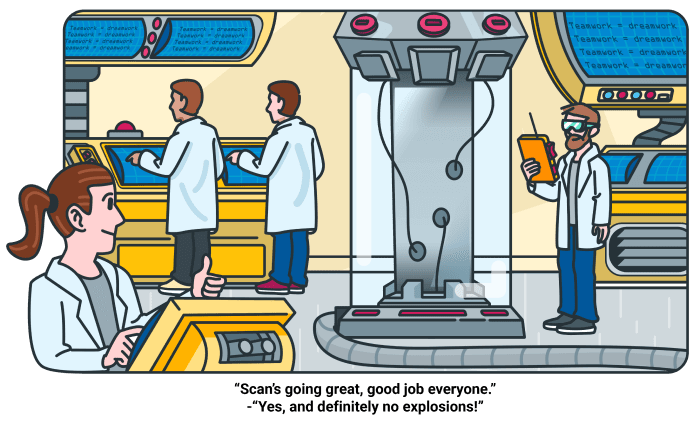
Following in the footsteps of companies who already understand the importance of great teamwork and how to establish it, is just the start — here is what HR consultants, culture coaches, communication and conflict management coaches, people and culture development experts, solutions coaches, and other relevant experts, studies, and general tips have to reveal about creating and promoting teamwork in the workplace.
Establish and promote clear values
Biljana Rakic, our very own head of HR, and people and culture development expert here at Clockify, emphasizes the importance of introducing the right values early on, in order to help the team make the joint effort towards a common goal:
“When talking about teamwork, we are actually talking about the values we share as a group of people. It sets us apart from others, directs us straight towards the goal, and helps us achieve better results. The values that are important should be promoted by the team of leaders, superiors, and the management, and these values include:
- transparency in business
- appropriately distributed individual and group responsibility
- open communication
- a space for flexibility
- a space for the expression of creativity”
Provide recognition when and where due
As Rakic further emphasizes, providing recognition to individual team members is another crucial factor in helping people cultivate the motivation to pursue their roles and responsibilities within a team:
“In increasing engagement while achieving a goal, recognition is crucial, both on the level of the team and on the level of the individuals. A person who feels appreciated will always do more than what is expected. When people feel that their work has a purpose and contributes to the development of something or someone, when they see their business goals clearly and strive for them, they will always do more, and will always approach every future task with increased motivation.
Demonstrating the importance of each employee can be done in several different ways, in accordance with team members, their characteristics, and aspirations.
One convenient solution for this is to implement joint meetings, during which values can be connected with the content of the work, tasks, etc. In addition to clear goals and measurable achievements, it is necessary to reflect from time to time, to remind yourself of past work, and the valuable results you already achieved.”
Define your intention as a team lead
According to Lorraine Segal, a communication and conflict management coach who offers solutions for a harmonious and productive workplace at Conflict Remedy, successful teamwork requires the team leads to perform some preparations in advance, and think about how they want to approach their duties:
“Establishing successful teamwork in a workplace starts before the team even meets — in setting your intention as a team lead and then following through. That’s easier than trying to make changes once bad patterns are established.”
To highlight her point, she offers an example of how you can best set your intention as a team lead:
“You can set guidelines for yourself as a leader and for the group. Here are some I’ve found most helpful. First and most important, believe and demonstrate that everyone has something of value to offer, that different views and expertise strengthen team decisions and problem-solving. And then act accordingly. In meetings, both group and one-on-one, help people feel comfortable to contribute, by welcoming all ideas, making space for people who aren’t naturally outspoken, and thanking people for their efforts and contributions. Keep meeting topics and goals clear, including who is responsible for which follow-up action.”
Help employees get to know each other (and understand themselves better)
According to Nathaniel Measley, the founder of Your Culture Design and a culture coach who has worked in HR/Talent, Development & Training for nearly 15 years, you should devote extra time to building your team early on, and getting to know them better, in order to understand how working with them may be like in the future:
“Ensure team members not only know each others’ capabilities, but personalities, characteristics, goals, and previous experiences and backgrounds. Energy upfront when forming or developing teams will save time, money, and energy later on.
Over the life of any project, any team may win or lose. It is important to know how people will respond. It will help to form a response from others.
Now, talent plays a factor in how successful your team will be with their projects. But, in order to reach success, you should also harbor communication — Measley further advises that you should also give your employees enough space to get to know themselves as well:
“Allow individuals to work on themselves, their own skills, knowledge, and approaches.
Allow those individuals to share those results with others who are practicing active listening.
The better and deeper a team understands themselves, and those around them, the better they can complete tasks and overcome challenges. After all, teamwork and communication can win over talent in most scenarios.”
To help you get to know your employees, but also help them understand themselves better, you can turn to professional assessments of employee personalities.
For example, the now-famous Myers Briggs personality test is globally used by HR to assess their employees in terms of personality type:
- Are they extraverted or introverted?
- Are they observant or intuitive?
- Are they focused more on what they think or how they feel?
- Are they judging or prospecting?
Understanding this will help HR, managers, but also employees themselves understand what kind of workers they have (or are), the ways in which they accept and give criticism, or how they are likely to behave in certain situations.
Most importantly, this data will provide invaluable insight when assembling teams.
Don’t try to prevent conflict – mitigate it
We come in all shapes, sizes and with a myriad of different personalities. It’s only natural some of us will cooperate better, while others will clash more often. Looking into the previously mentioned MBTI tests and engaging your HR or professional coaches to discuss office communication can help greatly. Conflict breeds new ideas and expands the perceptions of others. It can be good and constructive when solved with dialogue instead of office outbursts.
Establish good leadership and a clear purpose
According to Laura MacLeod, an HR consultant, a licensed social worker who specializes in group work, and a Licensed Master Social Worker at From The Inside Out Project®, good leadership, and a clear purpose are the two pillars on which successful teamwork is built on:
“Clear and authoritative leadership helps create structure, expectations, and accountability. But, you mustn’t forget to also nurture leadership that welcomes all voices and collaboration.
When it comes to the purpose, it answers the question of ” What’s the end result the team is working toward? We all need to know WHY — what’s the benefit and reason for actively participating and contributing?”
She illustrates how work in a team may look like if you disregard the above points:
“I have many examples of poor and ineffective teamwork due to the failure of the above. Ex: Staff group at a non-profit agency. The direction is authoritarian and punitive (get clients or we’ll need to lay you off) and the staff is anxious and burned out. No recognition of this and no emotional support in a tough time.”
She provides an example of positive and effective teams that mirror how successful teamwork in the workplace can also look like — the example involves her classroom where she teaches as a professor in an MSW program:
“My class is taught as a group — I am clearly in charge — assignments and expectations are clear. I model a culture of participation — I invite students — no forcing, no putting on the spot. I reach out because I want to hear what they have to say and I make it clear that the group will benefit too. We collaborate. Student sharing — whatever it may be — contributes to the learning.”
Let go of prejudices (and rivalries)
Until people get to really know their employees and coworkers, it’s all too easy to form prejudices and stick to old rivalries. These are big obstacles towards true teamwork, and Segal proposes you make the effort to better understand the people from your work environment, and work on forming a partnership with them instead:
“I helped one newly merged team at a mid-sized corporation work together successfully after having been rivals. The key here was helping the two leaders model deep listening and collaboration.
Letting go of judgments that are not fact-based is also helpful. One of my recent coaching clients, a CFO at an investment firm, said one member of her team, “Didn’t want to learn.” I challenged her to reframe, and instead assumed the person did want to learn; I then asked herself and the other person:
“What is getting in the way of her learning? What is missing or blocking her?”
When the CFO worked on this, she was able to release her assumptions and shift their interactions toward shared problem-solving. They were able to work together in an effective and mutually respectful way after that.”
Concentrate on solutions, not mistakes
We already talked about how a lack of self-awareness encourages people to be defensive towards criticism, while fear of public shaming encourages people to avoid accountability. The key here is to place a greater emphasis on finding solutions than assigning blame. When mistakes are made, they should be addressed respectfully and without pressure. Alternatively, when we concentrate more on the person behind the mistake than on finding the solution, we unknowingly ostracize them. Which makes them more likely to hide their mistakes next time or deflect responsibility completely.
💡 With a time tracker like Clockify, you can solve the issue of self-awareness by simply creating projects within the software, and assign team members to their tasks/roles. Then, as they track their time, you have complete transparency over who is doing what at any given time. The more transparency there is, the less finger-pointing incidents you’ll experience as a team.
Help the team relieve their stress levels
As we’ve already established, nothing good can come from a stressful work environment — and, Rakic proposes that you make a conscious effort to introduce specific stress-relieving activities into your team’s routine:
“It is important to recognize people’s right to rest and connect the work itself with a space for stress relief and rest. For this purpose, it is a great solution to organize stress relief meetings, i.e. smaller events meant to help you recognize that fatigue at work is a normal thing and that there is also room for rest in a professional setting — because, after a good rest, great results are achieved.”
Hold regular brainstorming sessions
Brainstorming sessions are a great way to launch the team’s initiative and help people understand how everyone thinks, but also handle decision-making and problem-solving processes together. By proxy, these sessions are great to rundown everyone’s ideas and select the best ones to further develop them, together. By holding regular brainstorming sessions, you’ll encourage participation and collaboration. It’s also a great way to help a new team get acquainted, introduce new team members, or introduce a new project.
Encourage people to be open to suggestions
This point is actually tied to the previous point — in order to make the decision-making and problem-solving processes a joint effort and hold successful brainstorming sessions, the team members will need to be open to new ideas and suggestions. Everyone should feel encouraged to come forward with ideas and suggest different approaches to practices that may not be ideal in your workflow. If you are a team lead, try to make others more comfortable with accepting other people’s ideas, by making it clear that your own ideas are also always open for further interpretations and improvements.
Encourage people to share their expertise
To be a true team player, you’ll need to be willing to share your resources, knowledge, but also expertise in general, with the rest of the team. So, encourage people to be open about their processes, to ask for, and seek help, but also to contribute to all ideas they feel they have relevant expertise in. Once again, if you are a team lead, it’s best that you approach this practice by setting an example yourself — make it clear that you are also more than willing to share your expertise on any matter you can help your team with.
Make the company changes easier to process
The CEO of PDRI and an expert in building organizational and team capabilities that translate into business growth, Elaine Pulakos, wrote about companies that employ what she calls “ARA – Adaptability, Resilience, and Agility”. These are three qualities that ensure the workforce withstands any and all changes and bounces back as quickly as possible:
- Adaptability involves:
- reacting to change and accepting it
- registering the change that occurred and finding ways to work within new shifts
- handling stress
- Resilience involves:
- the ability to slowly ease into the new state and actively try to reach equilibrium
- Agility involves:
- proactively changing the course
- finding new strategies
- focusing on the new goal
When a company instills these or similar values in its employees, it becomes much easier to handle change and not buckle under stress. So instead of making every team function for themselves, enable each employee to work in any combination.
Encourage people to focus on the bigger picture
According to Kimberly Friedmutter, author of Subconscious Power: Use Your Inner Mind to Create the Life You’ve Always Wanted, member-at-large of UCLA Health System Board, solutions coach, and globally recognized hypnotherapist, keeping the bigger picture and the common, end goal in mind, is another crucial step towards successful teamwork:
“We are pack-driven, especially when it comes to slaying the mammoth and bringing it back to the village, for all to eat. Or in the modern-day, landing the client and bringing home a paycheck. I use this analogy because pack animals are the ultimate example of successful teamwork. In fact, their life depends on it. Togetherness in the workplace comes naturally to those who are organically tied to survival. Watercooler talk about global events rather than each other (gossip) is one element. Intentionally keeping the workplace free of drama and allowing the drama to only play out as world events, not office events. Global thinkers in the workplace do this, they think big, not small. They think about events, not personalities. They think about the future, not last week. They think about survival, not demise. When you have workplace teamwork with common goals, they hit the mark.”
Make sure your team consists of the right people
Although teamwork implies a combination of people with different mindsets, skills, and knowledge, you’ll also need to make sure that these people, and the qualities they bring to the table, are complimentary, and relevant for your common goal.
Friedmutter emphasizes how successful teamwork often means that you need to think of the needs of the many, rather than the needs of the few, and how you’ll sometimes have individuals who are simply not suitable for the team culture you’re looking to build:
“Keeping the office workplace culture cohesive is key. If a teammate isn’t fitting into that culture, the teammate isn’t a good fit. Acting too slow can slow down the trajectory of the pack. A healthy workplace has healthy individual members. When a few people in an office notice a problem with the teammate, address the issue quickly, and look for a quick adjustment with that teammate. If too much time goes by before the problem is addressed, you risk losing the momentum of your team. For best results, act quickly.”
Remember – no matter whether you win or lose, you do it together
There truly is no “I” in “team”. Once you understand that the victories or failures of a few teammates determine the fate of the entire team, you’ll be able to build a sense of camaraderie that will help you finish a project to the best of your (joint) ability. If you fall behind in some areas of the project, don’t assign blame – instead, make the effort to find a solution together. According to Rakic, you can even find some use from your mistakes and failures:
“Even if there have been some failures, they are fertile ground for important lessons and a space for the empowerment of future activities.”
Alternatively, if you deliver the project on time, within budget, and with the expected quality, make sure you celebrate together. For example, order pizza to the office, put on some music, and make a toast with a celebratory round of drinks – you’ve earned it!
Conclusion
True teamwork often takes time, practice, and patience.
But, the end result is a group of teammates who listen to and appreciate each other. Who are heard and appreciated by others. Who work towards a common goal, by focusing on finding solutions together, rather than assigning blame for individual’s mistakes and clinging to prejudices and rivalries.
Teamwork implies following the same set of clear values and intents. It implies looking for solutions by collaborating, communicating, interacting, and brainstorming ideas. It implies fulfilling specific roles within a team, and offering exquisite customer satisfaction, next to quality products and services.
Such a team is a well-matched combination of personalities, skills, knowledge, and experiences, that complement and learn from each other, even in the face of disagreements and conflicts.
In the end, successful teamwork means that the team wins or loses together, and learns collectively from the experience, which is always fertile ground for future wins.

